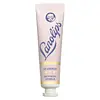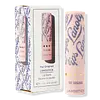What's inside
What's inside
 Key Ingredients
Key Ingredients

No key ingredients
 Benefits
Benefits

No benefits
 Concerns
Concerns

 Ingredients Side-by-side
Ingredients Side-by-side

Lanolin
EmollientRicinus Communis Seed Oil
MaskingCapryloyl Glycerin/Sebacic Acid Copolymer
Skin ConditioningCera Alba
EmollientCaprylic/Capric Triglyceride
MaskingPersea Gratissima Oil
Skin ConditioningJojoba Esters
EmollientAroma
Butyrospermum Parkii Butter
Skin ConditioningEuphorbia Cerifera Cera
AstringentMangifera Indica Seed Butter
Skin ConditioningSimmondsia Chinensis Seed Oil
EmollientCopernicia Cerifera Cera
EmollientTocopherol
AntioxidantLanolin, Ricinus Communis Seed Oil, Capryloyl Glycerin/Sebacic Acid Copolymer, Cera Alba, Caprylic/Capric Triglyceride, Persea Gratissima Oil, Jojoba Esters, Aroma, Butyrospermum Parkii Butter, Euphorbia Cerifera Cera, Mangifera Indica Seed Butter, Simmondsia Chinensis Seed Oil, Copernicia Cerifera Cera, Tocopherol
 Reviews
Reviews

Ingredients Explained
These ingredients are found in both products.
Ingredients higher up in an ingredient list are typically present in a larger amount.
Lanolin is a wax secreted by animals with wool, such as sheep. It is a waterproof emollient.
Emollients help soften and moisturize the skin by creating a film. This film prevents moisture from escaping, helping the skin stay hydrated.
Unlike true fats, lanolin contains sterol esters instead of glycerides. It also contains fatty acids and alcohols.
Because lanolin comes from an animal, it is not considered vegan. Sheep secrete lanolin through sebaceous glands to help protect their skin from the environment.
The answer to this question depends on the brand itself. Being cruelty-free means a brand does not experiment or harm animals. We recommend looking into how brands source their lanolin. Lanolin is cruelty-free if it is gathered without harming the animal.
Learn more about Lanolin